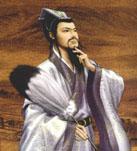Footnotes removed for the usual reason - because IE can't handle them.
------------------------------------------------------------------------------
Once established, the military orders quickly came to play a central role in Frankish military operations in the Latin East. The Templars and Hospitallers were able to draw recruits and revenues throughout Christendom, in contrast to Outremer’s feudal lords whose military capacity was limited by their lands’ modest resources and in particular by a chronic shortage of Frankish manpower. From the mid-twelfth century the two major orders each maintained around three hundred knights in the
The orders also provided the most effective troops available to the Franks in the Latin East. Western European battlefield tactics of the twelfth and thirteenth centuries relied on the heavy cavalry charge, a manoeuvre ill-suited to countering the light cavalry tactics employed by the Muslims. Successful use of the charge in this context required a level of experience and discipline that was lacking in knights newly arrived from
The best known aspect of the orders’ military prowess, however, was their heedless courage in battle irrespective of circumstances. The bravery of the warrior monks was universally recognised, and their reputation reached legendary proportions. Nor was it merely theatrics; on many occasions it won the day for the Franks, for instance at
For some critics, bravery merged with pride - the military orders’ other universally acknowledged trait - to become foolhardiness, compromising military outcomes. At the siege of Ascalon in 1153, for instance, the Templars allegedly caused an assault to fail by preventing their fellow Christians following them through a breach in the walls, desiring the glory for themselves. As a rule, however, claims of recklessness by the orders are ambiguous or associated with a particular individual rather than systemic traits. The Ascalon story derives from a single account written years after the event and inconsistent with the reports of eyewitnesses.Similarly, the alleged role of the Templar Grand Master Gerard de Ridefort in the disaster at Hattin is based on one potentially biased source and receives no mention in other contemporary accounts of the battle. Even if true, the irresponsibility displayed on this occasion and earlier the same year at Cresson (where a hundred Templars charged fifteen hundred Muslims and were wiped out almost to a man) reflects on de Ridefort’s leadership rather than on the Templars as an institution.
In any case, a degree of aggressiveness was essential to the reputation that drew the orders recruits and revenues from all over Christendom; they could not be seen as reluctant to fight when their prestige stemmed from an image of holy warriors smiting the infidel. It was failure to meet this paradigm, rather than a perceived excess of zeal, that underpinned most allegations of military incompetence made against the orders. Generally speaking the orders’ leaders had a sound understanding of the current military situation, which rarely favoured the Franks; they were thus inclined towards a prudent approach that often put them at odds with crusaders from Europe, for instance at Damascus in 1148, Mansurah in 1250 and during the Third Crusade. The crusader states’ distance and unfamiliar political environment meant that westerners had little understanding of the situation ‘on the ground’, and of the practical problems that the orders faced in maintaining Outremer’s long-term viability. Cultivation of relations with the Muslims, for example, made strategic sense but seemed to compromise the orders’ first principles and gave rise to accusations that they were in league with the infidel. Similarly, criticism that the orders’ brethren tended to hide in their castles during Muslim invasions and frequently surrendered fortresses without resistance reflects lack of knowledge of Outremer’s defence system. Castle garrisons were only expected to delay an invader until the field army had been mustered, and a castellan without hope of relief was well advised to surrender his fortress in exchange for safe passage and so preserve his garrison for the crusader states’ scarce manpower.
Not all of the orders’ shortcomings were mere matters of perception. Contemporaries noted the disparity between their resources and the forces they actually deployed in Outremer, and some degree of underutilisation did probably exist, though this is better explained by administrative deficiencies rather than indifference. Throughout nearly two centuries of residence in the
In the final analysis however the military orders should not be judged too harshly; they failed because they had undertaken an impossible task. The crusader states were strategically untenable; their survival depended ultimately on the political condition of the surrounding Muslim powers, and internal factors such as the orders’ performance could only delay catastrophe. To achieve anything more would have required sustained support from the west, but this was never forthcoming; Frankish immigration to the Levant was never more than a trickle, while crusades from

No comments:
Post a Comment